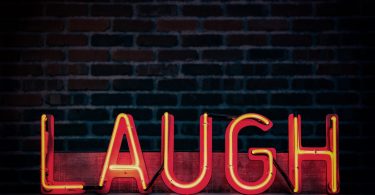For the last few years, the five main television channels in the UK have faced down accusations that their funding cuts to Arts programming have been negatively impacting our culture. In the summer of 2009, ITV scrapped The South Bank Show, and a report by broadcast regulator Ofcom in 2012 revealed that broadcaster spending on arts and classical music content fell by 39 per cent between 2006 and 2011.
So, is the future of our cultural programming in danger?
BBC Arts
If we look purely at the discrepancy between the drama, film, and arts budgets even today, our natural inference would be that cultural programming is, indeed, suffering. However, based on empirical evidence alone, the scope of arts programming remains broadly positive when we take into account channels such as BBC Four.
Their programming may not start until 7pm, but the BBC’s cultural arm does pack a whole lot into the few hours given to them. Most recently, they’ve been celebrating all things Gothic, with documentaries including When Gothic was Born, The Family That Built Gothic Britain, and an architecture piece on The First Gothic Age.
These shows may represent a niche interest in our culture, but they nevertheless exist as part of our national programming, and they do still have an audience.
Modern Culture
Outside of BBC Four, arguably, our modern culture is given an even wider showing. The eponymous Glastonbury festival, for instance, was this year given it’s most expansive BBC coverage in the history of the festival.
For anyone who wasn’t able to get a ticket (and, let’s face it, that was most of us), this meant that there were live video streams from six stages, more than 50 hours worth of television, and broadcasts from Radio 1, 1XTRA, Radio 2, and BBC 6 Music.
Similarly, the BBC’s coverage of the Edinburgh Festival Fringe – the largest theatre and performance event on this side of the Atlantic – was wide-ranging, prime time viewing throughout August. There is also the BBC Proms, the summer long classical music festival which airs on various BBC TV channels and Radio 3.
And, of course, we shouldn’t forget BBC Two’s The Culture Show, which still condenses the “best” of the week’s arts and culture news into a succinct half an hour chunk every week.
The Sky Legacy
A cynic might say that the BBC is trying to prove something – and the cynics may be right. Our primary television channels may all have experienced cuts to their arts budgets, but channels on digital TV are expanding all the time. Most notable among this phenomenon, is Sky Arts.
Broadcasting around the clock seven days a week, Sky Arts features classical music, explorations of great minds such as Shakespeare, televised theatre productions, and a whole host of arts-based documentaries.
Additionally, far from being a niche avenue, these two Arts channels attract big-name actors and celebrities, including the likes of David Tennant, Simon Callow and Stephen Fry.
Widening the Net
It may be, however, that the future of cultural programming lies not on our television screens, but on the internet. The impact of bi-directional media has already changed the way we read books and share information, and it seems a natural progression to assume that it will soon have a lasting impact on the way we consume television as well.
Up-to-the-minute social networking means that, increasingly, audiences are able to respond and interact with the content produced. This, inevitably, means that broadcasters are – now more than ever – beholden to their viewers.
Such audience participation, far from being damaging to cultural programming, I would argue actually increases its prevalence. Documentaries on the nature of Gothic Architecture may not pull in millions of viewers on TV, but online, the audience impact is increased by our ability to engage with both the programmes, and with each other.
Ultimately, arts television is changing. With losses such as The Southbank Show, there’s no arguing that, in terms of prime time viewing at least, cultural programming is still languishing in something of a funding decline. But with competition from both digital TV and the internet, it seems safe to assume that such a decline can’t last forever.
We, as audiences, are changing the way we consume cultural media; but that doesn’t mean that we aren’t watching. If competition is truly what’s needed to encourage more broadcasters to include books, art, theatre, and architecture on our television screens, then competition is what’s already happening.
Its funding may be weak, but the audience’s appetite for arts programming is still going strong, and sooner or later, the main five channels are going to have to respond to that.
What do you think? Have your say in the comments section below.








